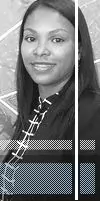The latest high-profile decision on shape trade marks, the Rubik's cube case, once again highlights the difficulties involved in seeking to protect product shapes through trade mark law.
Consequently, why do companies persist with seeking to register product shapes as trade marks? Especially in light of the fact that registered design protection is available and product shapes have traditionally been the domain of design law, with protection in South Africa being available for both functional and aesthetic designs.
One big attraction of trade mark registration is that there's no requirement of novelty, a trade mark does not need to be new to be registrable. Another perceived benefit is that there's no time restriction. A design registration is limited to 10 years in the case of a functional design and 15 years in the case of an aesthetic design, whereas a trade mark registration can be renewed indefinitely.
The registration of product shapes as trade marks can be problematic. As with any other kind of trade mark, the shape must be distinctive. Certainly in Europe, the distinctiveness bar is very high in relation to product shapes, with courts consistently saying (as they did in a case involving the shape of the Lindt chocolate bunny) that protection is only available where the shape "departs significantly from the norm or customs of the industry and thereby fulfils its essential function of indicating origin."
In addition, trade mark law provides that the shape cannot be functional, in that the shape must not achieve a technical result. The South African Trade Marks Act, for example, says that a trade mark cannot be registered if it "consists exclusively of the shape where such shape ... is necessary to obtain a specific result or results from the nature of the goods themselves."
The Rubik's cube case involved a three-dimensional trade mark registration for what is apparently the world's best-selling toy. Although this European registration goes back to 1999, it was subsequently challenged by a company called Simba Toys. The case went all the way to the Court of Justice of the European Union ("CJEU"), which overruled earlier decisions and held that the registration was invalid in that it contravened the prohibition on functionality.
The court once again made it clear that trade mark law cannot be used to protect technical solutions, which is the domain of patent law. What makes the decision interesting is that here the functionality, ie the capacity to rotate, was not apparent from the trade mark registration itself. According to the CJEU, trade mark authorities and courts may well need to look beyond what appears in the drawing that forms the trade mark application or registration and they may also need to take account of the non-visible functional elements.
The CJEU said this: "In examining whether registration ought to be refused on the ground that the shape involved a technical solution, EUIPO and the general court should also have taken into account non-visible functional elements represented by that shape, such as its rotating capability. "It said that further enquiries are required where it is not be possible "to analyse the shape concerned solely on the basis of its graphic representation without using additional information on the actual goods". It further said that "The essential characteristics of a shape must be assessed in the light of the technical function of the actual goods concerned."
Needless to say the company that makes the Rubik's cube was unimpressed. Commentators couldn't help making the point that the company was "puzzled" by the decision.
In South Africa, the current position on shape trade marks is taken from two cases. On the issue of functionality, the Supreme Court of Appeal ("SCA") in the case of Beecham v Triomed explained that the technical shape prohibition exists to "preclude the registration of shapes whose essential characteristics perform a technical function, with the result that the exclusivity inherent in the trade mark right would limit the possibility of competitors supplying a product incorporating such a function, or at least limit their freedom of choice in regard to the technical solution they wish to adopt in order to incorporate such a function in their product."
In a later case involving the validity of Nestlé's three-dimensional trade mark registrations for the shape of the Kit Kat chocolate bar, the SCA said that the purpose of the prohibition on registering trade marks that are exclusively technical in nature is to "prevent trade mark protection from granting its proprietor a monopoly on technical solutions, or functional characteristics of a product that a user is likely to seek in the product of competitors." It went on to hold that Nestlé's registrations did not exclusively consist of a shape that is necessary to obtain a specific technical result, even though Nestlé's trade marks had functional aspects relating to the release of the chocolate, they also contained non-functional features such as the plinth or apron. The court held that the registrations were valid.
The Kit Kat case may suggest that product shape trade mark registration may be slightly easier in South Africa than it is in Europe. That's good news for trade mark owners who do business in South Africa.
The content of this article is intended to provide a general guide to the subject matter. Specialist advice should be sought about your specific circumstances.

